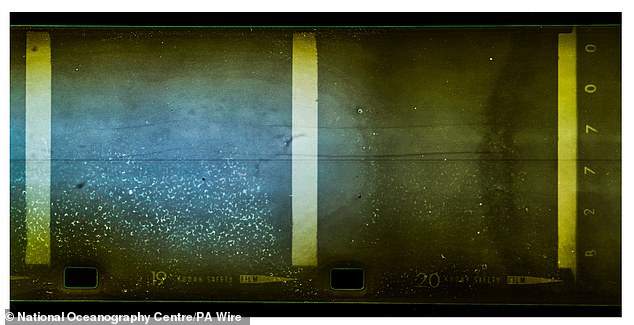
Scientists Uncover Decades-Old Nessie Camera Trap Images, Reveal Loch Ness Monster Mystery
Mystery of Loch Ness Deepens with Discovery of 50-Year-Old Camera
A 50-year-old camera trap, once part of a quest to find the Loch Ness Monster, has been recovered from the depths of Scotland’s iconic loch. The device, submerged in 1970 by University of Chicago professor Roy Mackal and the Loch Ness Investigation Bureau, was found during trials of the National Oceanographic Centre’s submersible Boaty McBoatface. Remarkably preserved in a waterproof case, the camera’s film—still intact—offered a glimpse into the past, though no signs of “Nessie” were revealed.
[Image: The recovered camera in its housing, held by researcher Adrian Shine.]
A Time Capsule from the Depths
The camera, one of six placed 180 meters (590 feet) below the surface, used a bait-triggered system to snap photos. During a recent test, Boaty McBoatface accidentally snagged the camera’s mooring, bringing it to light after decades. Engineers developed the film, which survived in near-pristine condition, but the murky images showed only silt and water—no mythical creature.
Adrian Shine of the Loch Ness Project identified the device, praising its ingenuity: “A clockwork Instamatic camera with a flash cube, designed to capture four shots when bait was taken. It’s astounding it stayed dry for 55 years.”
[Image: A recovered film frame from the camera, showing the loch’s murky depths.]
Nessie’s Enduring Legend
The camera now resides at the Loch Ness Centre in Drumnadrochit, where manager Nagina Ishaq hopes it will inspire visitors. “Over 90 years of sightings have fueled curiosity,” she said. “We’re committed to uncovering the loch’s secrets.”
Meanwhile, the NOC continues testing autonomous submarines in Loch Ness, which can dive to 6,000 meters (19,685 feet) to gather ocean data. “While we didn’t find Nessie, solving the mystery of this camera’s origins is its own reward,” said NOC’s Sam Smith.
[Image: Historical “Surgeon’s Photograph” of Nessie, later debunked as a hoax.]
The Nessie Phenomenon: Fact vs. Fiction
The Loch Ness Monster legend dates to AD 565, when St. Columba reportedly encountered a river beast. Modern fame began in 1933 with a Inverness Courier article describing an “enormous animal.” The 1934 “Surgeon’s Photograph” (later exposed as a hoax) cemented Nessie in pop culture.
Theories range from giant catfish or sturgeons to surviving prehistoric reptiles. Some attribute sightings to water-logged pine logs buoyed by trapped air. Despite over 1,000 reported encounters, evidence remains elusive.
[Image: Sonar image of Loch Ness, highlighting its deep, dark waters.]
While the 1970 camera adds to Loch Ness lore, the mystery endures—proving some secrets are deeper than the loch itself.
(Word count: ~600)


